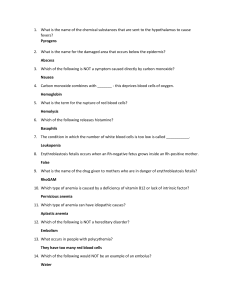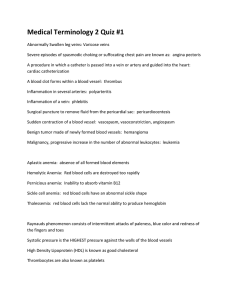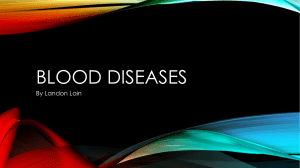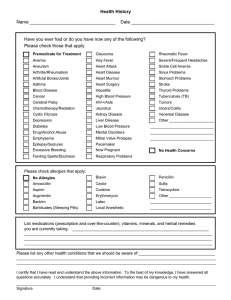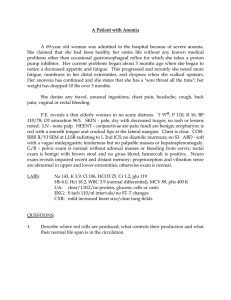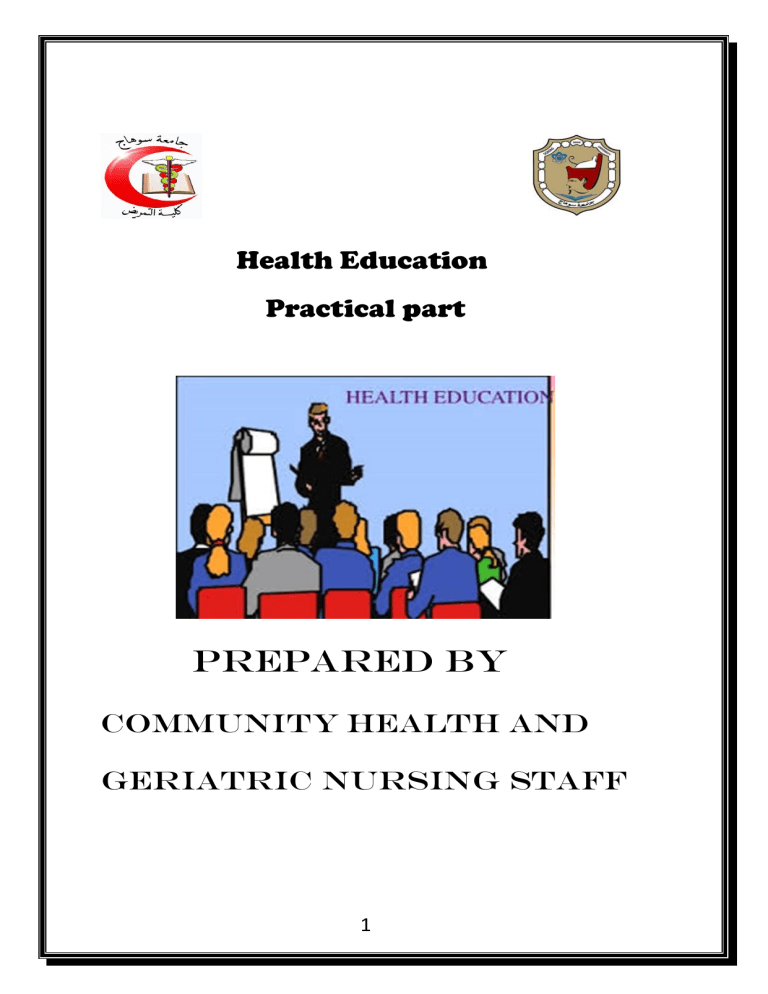
Health Education Practical part Prepared by Community health and Geriatric nursing staff 1 Health Education Program Outline: Definition of program Purpose of planning health education program Steps of health education program Planning process steps,” summarizes the steps Application for health education program 2 Definition of Program A program is defined as a series of activities supported by a group of resources intended to achieve specific outcomes among particular target groups Purpose of planning Health Education program to match resources to the problem intended to solve Ensure the best use of scarce resources. help avoid duplication of activities. For example, you wouldn’t offer health education to households on the same topic at every visit. priorities needs and activities. This is useful because your community may have a lot of problems, but not the resources or the capacity to solve all these problems at the same time. Finally, planning enables you to think about how to develop the best methods with which to solve a problem. Steps of Health Education program Regardless of what planning model is used, there are essential elements common to the designing a health 3 education program targeting a specific health problem. The essential components of A program plan include the following: The six key steps in a planning process are listed below. 1. Establish the planning team. 2. Assess health problems and service needs. 3. Set goals and objectives. 4. Develop an action plan. 5. Implement the plan. 6. Evaluate effectiveness of the planning process and program. “Planning Process Steps,” summarizes the steps 1) Establishing a planning group: This may or may not be needed depending on the program focus. Planning groups can include both internal and external members of the organization. External members may include other health professionals, stakeholders, volunteers, and members of the target audience. The planning group may be a county coalition or health council that has identified a 4 health problem unique to the community and wants to pool county resources to address the problem. Advantage of a planning group A) The multi-disciplinary nature, B) the variety resources (educational, professional and dollars) C) Different channels to the target audience, and experience with the target audience. Disadvantage to planning groups Is that they require extra time to mobilize the group in order to reach consensus in the develop of the program plan 2) Stating goals: These are broad statements that define what the health education program is expected to accomplish. Long and short-term goals need to be recognized. Short-term goals can be accomplished such as protecting the community against the influenza virus through immunization. It is a short-term goal and can be easily stated in behavioral terms. But a goal of improving the health status of a community is a timeless 5 goal and will not be accomplished in a reasonable amount of time. The short-term goals help achieve the long-term goals of a program. 3) Stating objectives Objectives state the specific knowledge, attitudes and behavior changes needed to achieve the goal. These objectives should be specific, measurable, assigned to a specific target audience, realistic, and reflect a specific timeframe (SMART). They set the agenda for program evaluation. The following are examples of learner objectives: Upon completion of the program (Timeframe)... • participants (assigned to a specific target audience) will describe the relationship between early detection and successful control of high blood pressure. (Knowledge objective that is specific, measurable and realistic) • Participants will state the numerical range for normal blood pressure and high blood pressure. (Knowledge) • Participants will list two ways they plan to control their high blood pressure. (Behavior) 6 Participants will state at least two ways that high blood pressure is treated. (Knowledge) • Participants will list at least two types of high blood pressure medications. (Knowledge) • Participants will accurately use a digital blood pressure monitor. (Behavior) • participants will appreciate the importance of taking high blood pressure medication as prescribed by helping a loved one take their blood pressure medication. (Attitude) 4) Identifying methods These are the means through which the changes will be made. Methods identify the vehicle for education such as mass media, videos, role playing, community development, case studies, lecture-discussion, selfassessments, and skill development. 4) Identifying resources and barriers Specific resources in the target community may be used for the program to bring about change. Barriers are the forces that are expected to work against the program. 7 5) Developing the evaluation plan The Plan of Action should include: • Goal and objectives • What steps are to be taken - list of activities • Who will be responsible for each step - person in charge. • What materials, equipment, people, funds will be necessary For each step - resources • When each step is to be completed - target date .program is implemented. 6) Implementing the plan: Procedures for promoting the program, recruiting the target audience, and conducting the program activities are described. 7) Evaluating the program: Evaluation can range from simple to complex, from consideration of the most basic elements of the program to abstract implications. The more complex the evaluation, the greater the costs, the level of professional expertise, and time requirements Evaluation is the process of looking back over what has been 8 done to be sure that things were done the way they should. Evaluation is not a one-time event. It is a continuous process how the program is progressing according to a set time table in the action plan. Information for evaluation program would be obtained from Observations, interviews, and records Application for health education program 1- Title: Impact of nursing intervention on anemia among pregnant women in zagazig city 2- Introduction When you're pregnant, you may develop anemia. When you have anemia, your blood doesn't have enough healthy red blood cells to carry oxygen to your tissues. During pregnancy, your body produces more blood to support the growth of your baby. If you're not getting enough iron or certain other nutrients, your body might not be able to produce the amount of red blood cells it needs to make this additional blood. It's normal to have mild anemia when you are pregnant. But you may have more severe anemia from low iron or vitamin levels or from other reasons. 9 Anemia can leave you feeling tired and weak. If significant and untreated, it can increase your risk of serious complications like preterm delivery. 3- The aim of this study: will be assessed the impact of health education intervention on improve anemic pregnant women problem 4- Objectives: ❖ Define anemia during pregnancy ❖ Explain causes of anemia ❖ List sign and symptoms of anemia ❖ List types of anemia during pregnancy ❖ Identify complication of anemia during pregnancy on mother and fetus ❖ Describe suitable nutrition to pregnant women ❖ Mention prevention from anemia ❖ Discuss management of anemia 5-Sampling or participant: All pregnant women suffering from anemia will be selected who fulfill the following criteria Inclusion criteria • Age 20-38 • Primi and Para women 10 6- Setting The study will be carried out in two maternal and child health center at zagazig City 7- Characteristics of place: Good ventilation, good light, sufficient number of chairs and tables 8- Permission The agreement for participation of subjects will be taken after fully explanation of the aim of study. Participation and they will be notified that they could withdraw at any stage of the data collection interviews also they will be assured that the information would be confidential and used for the research purpose only 9 – Program description ✓ Duration of program: The program will be implemented to prevent anemia during pregnancy , followed by post-test after 6 months ✓ number of session: ( 5) session ✓ duration of each session: ( 30- 45) ✓ Resources ✓ Manpower: I need lab personnel for regular analysis of HB for pregnant women 11 ✓ budget : budget of teaching material, lab personnel that carried HB analysis for pregnant women that’s makes every two weeks ✓ teaching method:( lecture- group discussion- brain storming) ✓ teaching media: ( pamphlets, flipchart, flannel graph, PowerPoint) 10- Content of problem • Definition of problem and incidence • Causes of problem • Signs and symptoms • types of anemia during pregnancy • Complication ▪ Prevention • Management Topic objecti Time ves Teaching Teachi evaluati method ng on media Definition Define 30 Lecture & minute Discussion oint anemia 12 PowerP Oral and Causes of Explain brainstormi Pamphl written anemia causes ng during of pregnancy anemia et examina Flip tion chart Flannel graph Types of List anemia Types during of 30 Lecture PowerP Oral minute Discussion oint and brainstormi Pamphl written pregnancy anemia ng et examina Flip tion chart Feedbac Flannel k graph Signs and List 30 Lecture symptoms Signs minute Discussion oint & and Complicat sympto ion anemia PowerP Oral and brainstormi Pamphl written ng of ms ( Identify et examina Flip tion chart Feedbac on mother, Compli Flannel k fetus) graph cation 13 of anemia Prevention Apply 30 Lecture PowerP Oral of anemia, preventi minute Discussion oint treatment Brainstorm Pamphl written on of et and anemia ing Describ demonstrat Flip tion e ion Feedbac chart examina treatme Flannel k nt graph Examples Identify 30 Lecture PowerP Oral about vegetari minute Discussion oint nutrition ans& brainstormi Pamphl written for non ng and et examina Vegetarian vegetari Flip tion s ans chart Feedbac Non- Nutritio Flannel k vegetarian n graph s 14 11- Pre- test content of problem evaluation: o Definition of problem and incidence o Causes of problem o Signs and symptoms o Types of problem o Complication ▪ Prevention o Management 12- Post- test for content of problem evaluation: o Definition of problem and incidence o Causes of problem o Signs and symptoms o Types of problem o Complication ▪ Prevention o Management 15 16 How do you design health education program? --------------------------------------------------------------------------------------------------------------------------------------------------------------------------------------------------------------------------------------------------------------------------------------------------------------------------------------------------------------------------------------------------------------------------------------------------------------------------------------------------------------------------------------------------------------------------------------------------------------------------------------------------------------------------------------------------------------------------------------------------------------------------------------------------------------------------------------------------------------------------------------------------------------------------------------------------------------------------------------------------------------------------------------------------------------------------------------------------------------------------------------------------------------------------------------------------------------------------------------------------------------------------------------------------------------------------------------------------------------------------------------------------------------------------------------------------------------------------------------------------------------------------------------------------------------------------------------------------------------------------------------------------------------------------------------------------------------------------------------------------------------------------------------------------------------------------------------------------------------------------------------------------------------------------------------------------------------------------------------------------------------------------------------------------------------------------------------------------------------------------------------------------------------------------------------------------------------------------------------------------------------------------------------------------------------------------------------------------------------------------------------------------------------------------------------------------------------------------------------------------------------------------------------------------------------------------------------------------------------------------------------------------------------------------------------------------------------------------------------------------------------------------------------------------------------------------------------------------------------------------------------------------------------------------------------------------------------------------------------------------------------------------------------------------------------------------------------------------------------------------------------------------------------------------------------------------------------------------------------------------------------------------------------------------------------------------------------------------------------------------------------------------------------------------------------------------------------------------------------------------------------------------------------------------------------------------------------------------------------------------------------------------------------------------------------------------------------------------- 17 18 19 20
